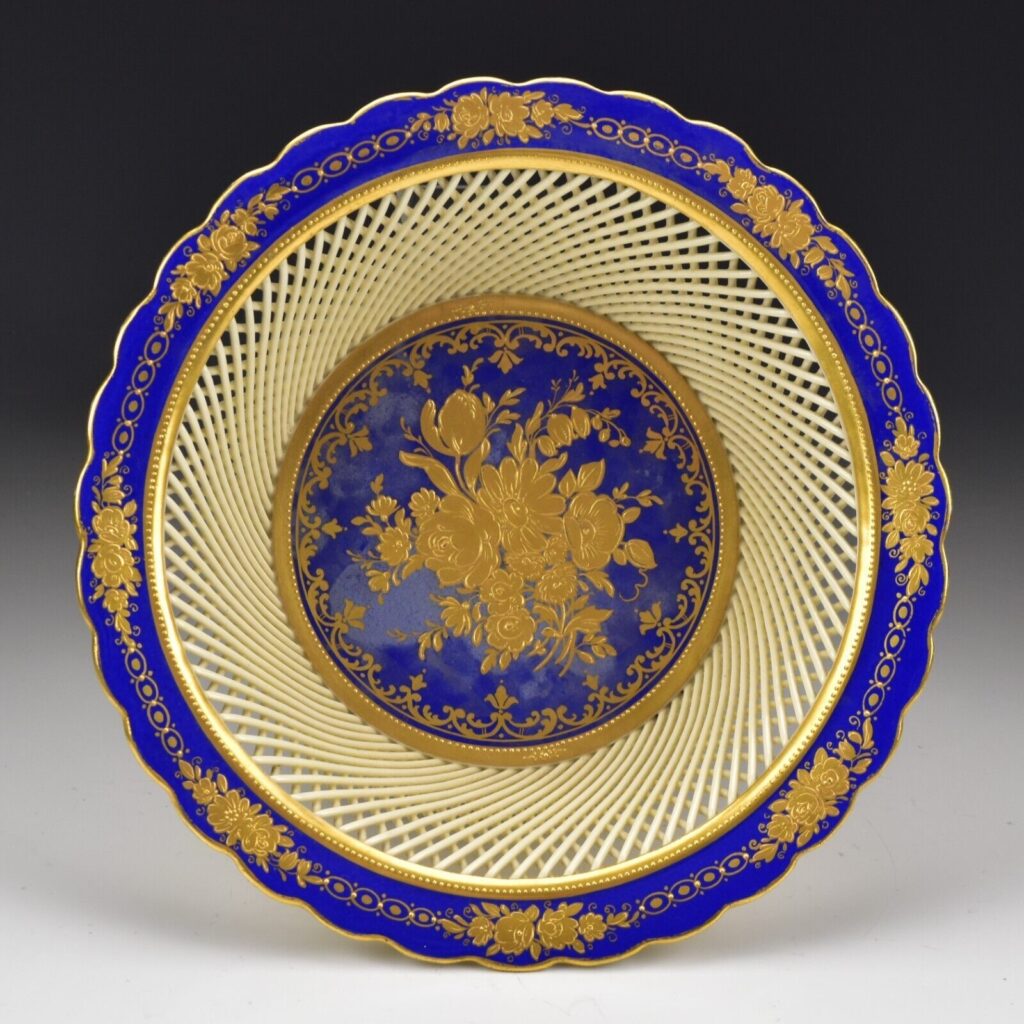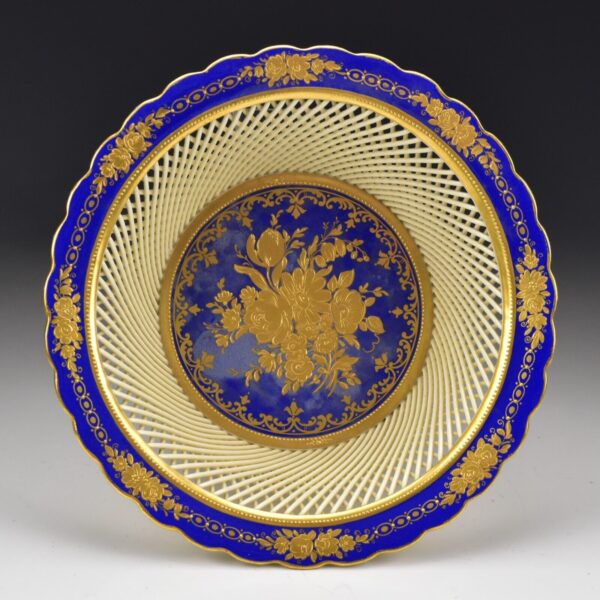#HighQuality #Porcelain #WorthPoint

Whether you’re collecting, decorating, or thrifting items to flip, you’ve probably noticed a wide array of porcelain available out in the marketplace. It takes years of practice and handling countless ceramic pieces to become familiar with them, but even then, you won’t know everything. As a child, I grew up in my mother’s antique shop and spent a lifetime learning about antiques and collectibles, but I still continue to discover new things that help me make better buying decisions.
With that said, there are some general things to look for that will serve you well. Paying attention to the material, decoration, unusual features, and marks can help while shopping. These features all provide clues to keep in mind as you browse and shop.
Delicate Materials
Porcelain is a ceramic material that is usually thin and light compared to earthenware and stoneware (types of pottery). It has been used to make everything from serveware to decorative accessories and figurines. Bone china is also a type of soft-paste porcelain often used to make dinnerware. Some porcelain pieces are so delicate; in fact, they have a lovely translucence when held to the light.
Not all pieces of porcelain have these fine qualities, however. Some have a clunky feel akin to pottery. If the décor is nicely executed, a piece can still have value, but many of the loveliest pieces of porcelain— including the cream of the crop by Meissen and Sevres—have a more delicate feel and appearance. Remember that many pottery pieces are also quite valuable, so don’t immediately cast aside heavier ceramics. Studying the weight and feel can pay off.
Detailed Décor
First, be aware that many beautiful and valuable pieces of antique porcelain are decorated with transfer prints. You can distinguish a transfer from hand painting by looking at the artwork with a jeweler’s loupe or another type of magnifier—whether it’s a portrait, floral, or landscape design. Small brush strokes and other detailing will be present when a piece is hand-painted, while small dots will be evident with transfer prints or decals.
Sometimes, transfers are augmented with hand-painted detailing or gilding on rims and other raised areas. In fact, a transfer print with impeccable hand-painted accents is preferable to a sloppily hand-decorated piece.
The art of porcelain painting was often refined over decades spent working in big-name factories, so some artists were more accomplished than others. At the turn of the 20th century, many amateur porcelain painters also tried their hand at decorating plain ceramics called blanks. Some of those are brilliantly executed, others are not. The work may be good—whether the item was decorated in a factory or by an individual—but if an artist’s signature is present, that’s even better.
Another thing about décor to be aware of is that the subject matter and color can impact the value. For instance, a plate with a portrait painted on it can be more valuable than the same exact piece decorated with a floral design. When it comes to florals, roses often win out over simpler flowers. Red roses are often more popular than white or yellow. There are always exceptions, but these are some general things to tuck away in your memory bank.
Unusual Features
From graceful handles on coffee pots to fancy finials on sugar bowls, details matter when ferreting out the top buys in antique porcelain. In other words, the folks who made the models for the best of the best were just as talented as the painters who decorated them. Blown-out molds, pedestal bases, and delicate feet are all things to look for in a great piece of porcelain.
Some porcelain pieces also have applied embellishments. These can include “lace” elements made from porcelain mesh, hand-crafted flowers, and other hand-applied décor. If the sum of the parts looks like it took many man-hours to accomplish, you’re likely in the presence of a piece of porcelain worth another look. Just make sure all those minute details are in excellent condition before sealing the deal.
Marks and Backstamps
Not all fine porcelain will have a mark on the bottom or back of the piece. Nevertheless, this is an important aspect of buying high-quality porcelain you don’t want to overlook. If you come across a porcelain item that has a mark you recognize or can easily research, and if the price is reasonable, then there’s no doubt that you should buy it. Especially if the item is made of high-quality material and has attractive decorations or unique features that appeal to you. This applies to both buying as a collector and for resale.
Researching porcelain reproductions before you shop should also be at the top of your study list because all the most valuable types have been remade at one time or another. Newer marks usually look a bit too perfect compared to old ones since many have been applied with printers rather than stamped by hand.
Also, keep in mind that while marks are important, many porcelain companies made wares of varying quality. Items made during one period in a company’s history can be more desirable than another. For many collectors, pieces with older backstamps are more desirable than newer ones.
If all this sounds confusing, don’t worry. As you examine porcelain out in the marketplace and hone your skills, these attributes will become easier to evaluate on the fly. You will soon reap the benefits of knowing what to bring home and what to leave behind.
Pamela Siegel is a freelance writer and author who has been educating collectors for more than two decades. In addition to three books on topics relating to antiques and collectibles, she frequently shares her expertise through online writing and articles for print-based publications. Pamela is also the co-founder of Costume Jewelry Collectors Int’l (CJCI) and the proprietor of Chic Antiques by Pamela.
WorthPoint—Discover. Value. Preserve.




